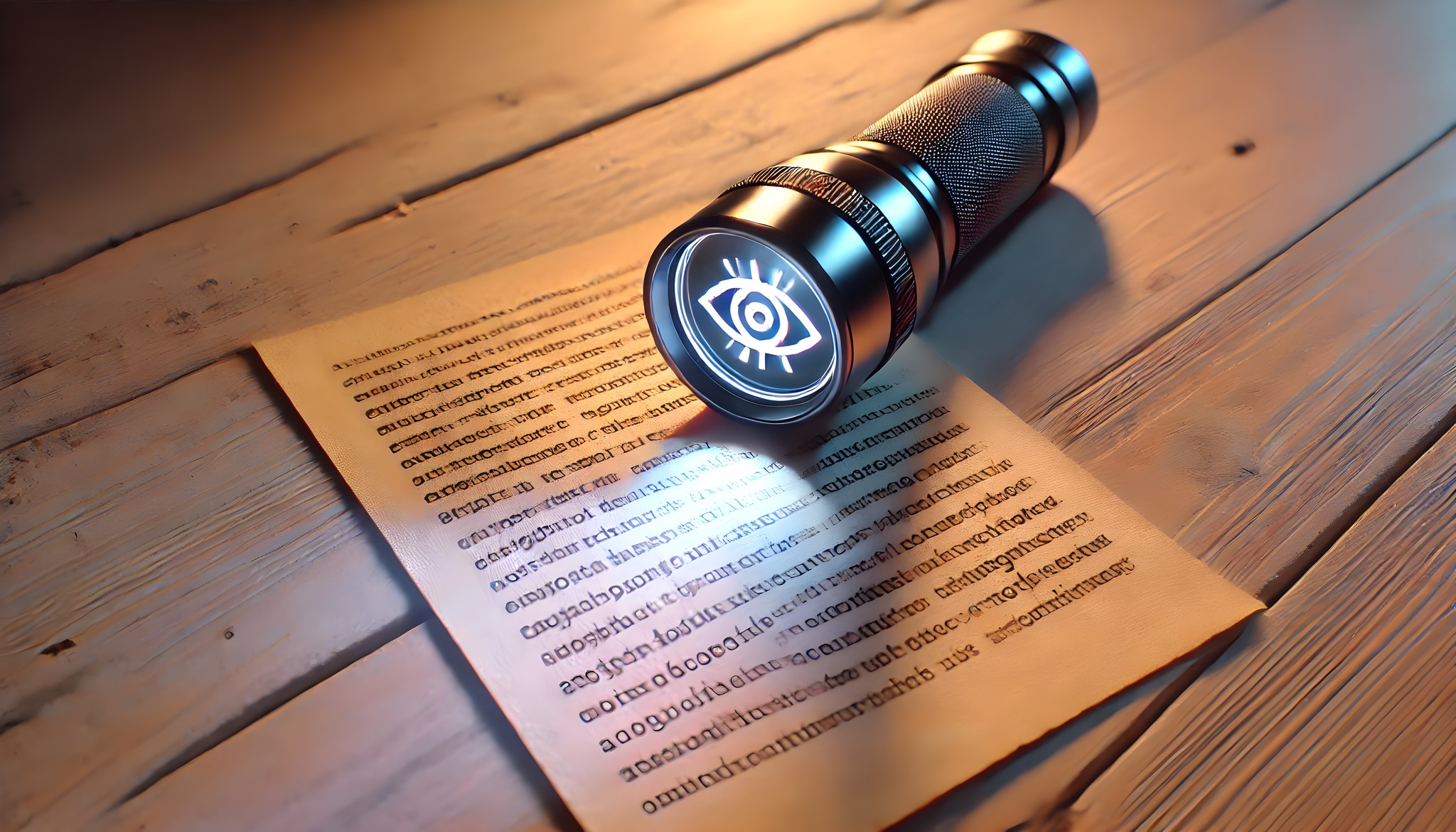
Prompt “A photorealistic image in pastel colors. On a wooden table, a piece of paper with handwritten text is illuminated by the beam of a flashlight. The flashlight is placed upright and has a symbol on it, either a stylized human eye or an icon representing artificial intelligence. The lighting is soft and dramatic, with the flashlight's glow highlighting the text, while the surrounding table and background remain gently blurred in warm pastel tones. The atmosphere is reflective and symbolic, evoking curiosity and insight."
© DALL.E 2025
“When AI Takes over Authorship, a Line Has Been Crossed”
Matthis Kepser, professor of German Studies, on best practice for AI in writing
Can lecturers recognize whether students have submitted AI-generated texts? Matthis Kepser explains which methods work and why a sensible use of AI is more important than banning it.
Mr. Kepser, does it make a difference if students seek help from a generative AI like ChatGPT instead from parents or lecturers? What do you think about this?
I don’t think there is anything wrong with this. ChatGPT takes on the role of a virtual teacher. It supports tasks that previously could only be done by human lecturers. I don’t see that as problematic, but rather as a step towards increasing equal opportunities.
Where do you draw the line between what is acceptable and what is not?
When AI takes over authorship, a line has been crossed. This not only violates the declaration of originality, but also deprives students of the opportunity to acquire knowledge through the writing process itself. Writing is a learning process. This is lost when texts are completely generated by AI.
What is the best way to use AI in writing?
AI can provide valuable assistance with editing texts or generating ideas. But it is important that students understand its limitations and don’t skip the writing process.
How can lecturers recognize whether a text was generated by an AI?
There are three approaches: First, a comparison with previous work can reveal noticeable shifts in style or argumentation. Second, AI-generated texts often show typical weaknesses, such as inconsistent argumentation or repetitive sentence patterns. Third, AI detector tools can confirm suspicions, but are not sufficient on their own because they have their own weaknesses.
You have done some of your own research in this area. What prompted you to do so?
The catalyst for my investigation was a student’s remarkably poor work, riddled with false quotations generated by AI. This prompted me to delve deeper, exploring numerous AI-generated texts and utilizing detection tools. While these tools often deliver reliable results, they are not infallible. My research has shown that combining different methods is the most effective approach to detecting AI-generated texts.
Isn’t it a never-ending game of cat and mouse between new generations of AI and detection tools?
Yes, it is. It is analogous to virus scanners in that both the attackers and the defenders are constantly evolving. This means that we have to stay alert and continuously adapt.
What do you think about the idea of watermarking AI-generated text? Watermarks are invisible or hard to detect marks in the text.
That would be a helpful move. Recognition would be easier if AI manufacturers included such markers by default. It remains to be seen whether this will be put into practice eventually.